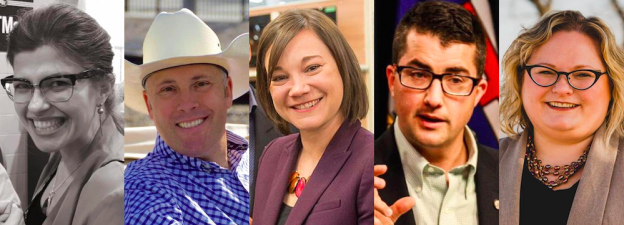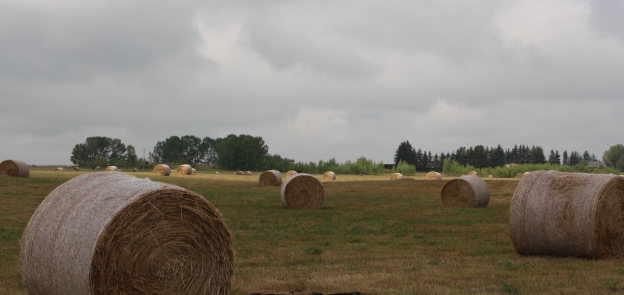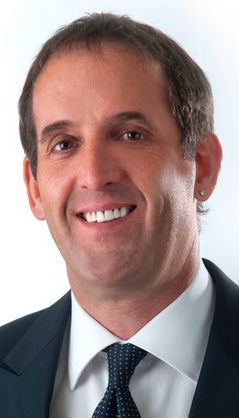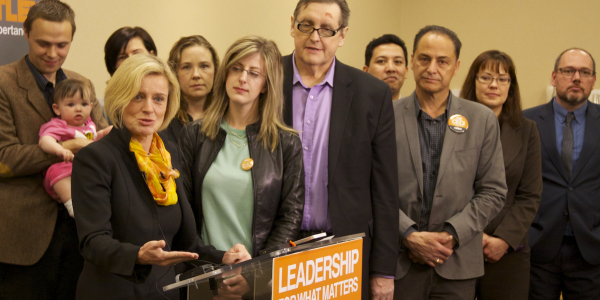In our most recent episode of The Daveberta Podcast, Ryan and I asked you to help us shape our final episode of 2017 by voting in the Best of Alberta Politics 2017 Survey.
More than 300 of you responded to the survey last week with your choices for the biggest political players and defining political issues of 2017. We tallied all the responses from that survey and we are now asking you to vote on the top 3 choices in each category.
Voting will be open until 12:00 p.m. on Thursday, December 21, 2017 and we will reveal and discuss the results in the final podcast episode of 2017, which we will be recording on the same day.
Here are the top 3 contenders who you can vote for in Round 2 of the Best of Alberta Politics 2017 Survey:
Who was the best Alberta MLA of 2017? – Vote
- Premier Rachel Notley, NDP MLA for Edmonton-Strathcona
- Greg Clark, Alberta Party MLA for Calgary-Elbow
- David Shepherd, NDP MLA for Edmonton-Centre
An honourable mention to Sandra Jansen, the NDP MLA for Calgary-North West, who placed a strong fourth in the first round of voting.
What was the biggest political issue in 2017 in Alberta politics? – Vote
- Gay-Straight Alliances
- The Economy and Jobs
- Oil Pipelines
Who was the best Alberta cabinet minister of 2017? – Vote
- Sarah Hoffman, Deputy Premier and Minister of Health and Seniors
- David Eggen, Minister of Education
- Shannon Phillips, Minister of Environment and Parks
Honourable mentions to Danielle Larivee, Minister of Children’s Services, and Deron Bilous, Minister of Trade and Economic Development, who placed a strong fourth and fifth in the first round of voting.
Who was the Best Opposition MLA for 2017? – Vote
- Greg Clark, Alberta Party MLA for Calgary-Elbow
- Nathan Cooper, UCP MLA for Olds-Didsbury-Three Hills
- David Swann, Liberal MLA for Calgary-Mountain View
Honourable mentions to Richard Starke, the Independent PC MLA for Vermilion-Lloydminster, and Brian Jean, the UCP MLA for Fort McMurray-Conklin, who placed a strong fourth and fifth in the first round of voting.
Who is the up and comer for 2018? – Vote
- Jessica Littlewood, NDP MLA for Fort Saskatchewan-Vegreville
- Jason Kenney, UPC MLA for Calgary-Lougheed and Leader of the Official Opposition
- David Shepherd, NDP MLA for Edmonton-Centre
An honourable mention to Brian Malkinson, the NDP MLA for Calgary-Currie, who placed a strong fourth in the first round of voting.
What was the biggest political play of 2017 in Alberta politics? – Voting Closed
In the first round of voting, 59 percent of you chose the creation of the United Conservative Party as the biggest political play of 2017. Because of this was the choice of a clear majority, we have declared this result as the winner in this category. Congrats, UCP.
Other notable choices in his category were Premier Rachel Notley’s pipeline tour, Greg Clark’s being forced out of the Alberta Party leadership and the NDP government’s Bill 24: An Act to Support Gay-Straight Alliances in Schools.
Photo: Jessica Littlewood, Greg Clark, Shannon Phillips, Nathan Cooper, and Sarah Hoffman.







